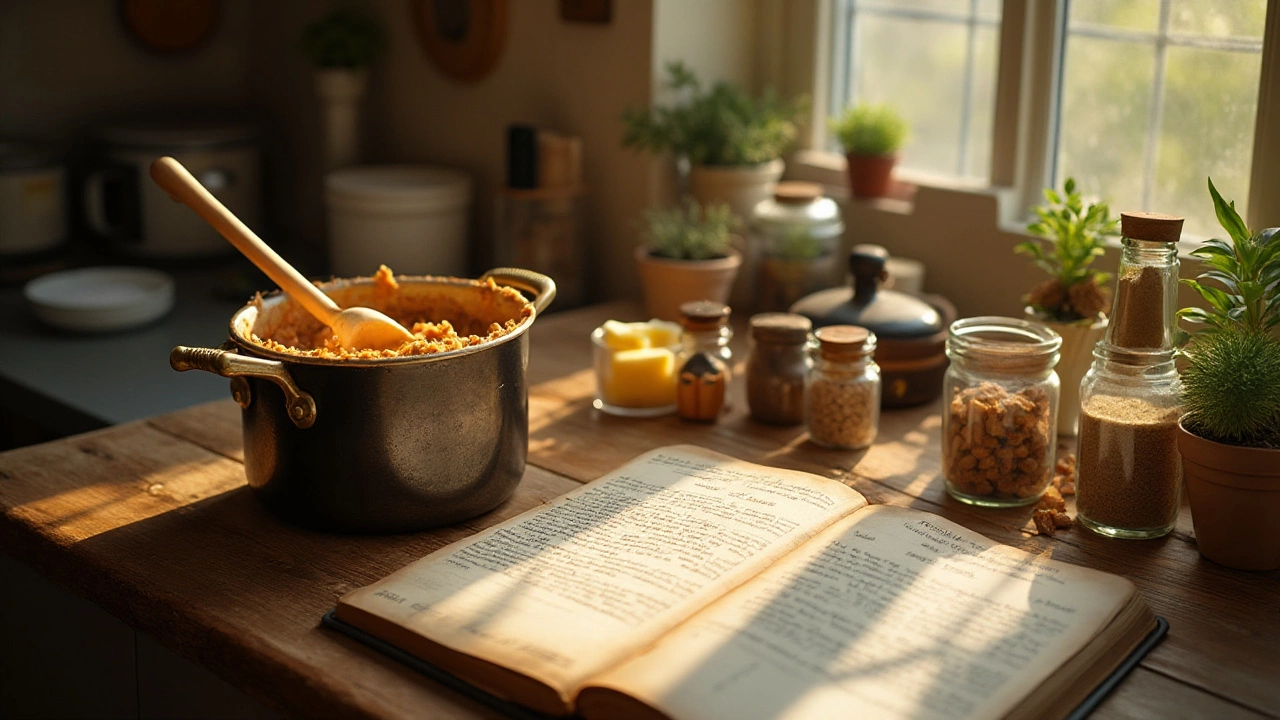
Fudge, with its melt-in-your-mouth allure and nostalgic charm, carries with it the essence of home-baked goodness. Stepping into the world of fudge-making is like entering a realm where few ingredients create a symphony of flavors.
The beauty of traditional fudge lies in the simplicity of its ingredients. At its core, the recipe calls for just sugar, butter, milk, and an optional splash of vanilla extract. Each component plays a critical role in achieving the smooth, creamy consistency that defines perfect fudge.
Whether you are reminiscing about a sticky-fingered childhood spent in the kitchen or you're about to embark on your first fudge-making adventure, knowing what elements come together to create this sweet delight can open doors to endless experimentation and enjoyment.
- The Essence of Sugar
- Butter: The Richness Factor
- The Role of Milk
- Vanilla for Flavor
- Cooking Technique
- Fun Variations and Tips
The Essence of Sugar
The cornerstone of any traditional fudge recipe, sugar is much more than a sweetener. It is the backbone of the fudge’s structure and the key to its delectable texture. When you make fudge, the process of heating sugar to just the right temperature forms what’s known as the sugar syrup, which will eventually crystallize into that delightful, creamy consistency. Here lies the alchemy of candy-making, a balance between science and artistry where each degree matters. Fudge-making typically requires the sugar to reach a ‘soft ball’ stage, around 234 to 240 degrees Fahrenheit, a moment that can be a bit tense yet rewarding as you watch the sugar work its magic.
One might wonder why some batches of fudge turn out gritty while others are smooth as silk. It's all about how you control the sugar. When sugar crystals are allowed to form too aggressively, you end up with a grainy texture. The secret is constant stirring and attention to temperature. Stir too little or at the wrong moments, and you might find yourself with a batch that’s more crumble than cream. Interestingly, the color of your fudge can tell you a lot about the stage of your sugar, with a too-light color indicating that you may not have reached the right temperature.
Interestingly, variations in sugar types can bring about different flavors and textures. While granulated white sugar is the most commonly used, some fudge lovers experiment with brown sugar for a deeper, caramel-like richness. Yet, the classic holds a strong sway. The granulated variety yields a purer taste where the subtle vanilla can shine through without overpowering caramel undertones. Fudge recipe enthusiasts often cite the balance between sugar and other ingredients as the true craftsmanship behind this timeless treat.
"Fudge is the chocolate alchemy we all seek. A recipe perfected by care, detail, and a lot of warmth," says Mary Berry, renowned baking expert.
In terms of health and diet, there are considerations worth mentioning. While make fudge might conjure thoughts of indulgence, moderation is the key. Interestingly, in the kitchen, the sugar works hand in hand with fat molecules from milk or butter, slowing down the crystallization process and giving the confection its unique bite. This tiny detail highlights why, in recipes, the ratio of sugar to other ingredients is often discussed with such precision and care by expert candy makers.
Butter: The Richness Factor
Butter, the golden block of creamy goodness, is a cornerstone of any traditional fudge recipe, infusing the confection with its luscious richness. This essential ingredient is more than just a flavor enhancer; it plays a pivotal role in determining the texture and mouthfeel of the traditional fudge. Butter contributes to the fudge's smooth, melt-in-your-mouth quality, which is what sets it apart from other sweets. The fat content in butter acts as an emulsifier, binding the other ingredients together while also preventing the sugar from crystallizing, which is crucial for maintaining that perfect fudge consistency.
The type of butter used in fudge recipes can subtly influence the flavor profile of the end product. For instance, unsalted butter allows bakers to control the exact amount of salt in their recipe, while salted butter can add a unique savory edge to the sweetness. In the grand tradition of fudge-making, many experts insist on using high-quality, fresh butter to ensure that the treat achieves its desired flavor and texture standards. After all, it’s the richness that butter lends to fudge that makes each bite feel indulgent and satisfying.
Nutritionally, butter provides a rich source of calories and fat, which are essential for carrying flavors and adding a luxurious texture. It’s important to use it in moderation, though, to strike the right balance between decadence and health. In some creative variations of fudge, bakers might experiment with different types of fats, like coconut oil or margarine, yet traditionalists often swear by the **rich taste** of classic butter. As a whimsical twist, some recipes call for browned butter, which introduces a nutty depth to the fudge, creating layers of sensory experiences with every morsel.
Butter's Role in Fudge Science
Understanding the science behind butter's role in fudge leads to mastering the art of fudge-making. During the cooking process, butter aids in breaking down sugar molecules, which is integral in forming a smooth texture without unwanted grit. The creamy element provided by butter allows for the characteristic 'fudge crack' — the slight, pleasurable snap that comes when a slice of fudge is broken. This phenomenon occurs when the concoction is cooked and cooled to optimal temperatures, a delicate dance of timing and temperature that can either make or break your batch of fudge.
With its pivotal role, butter is not merely an ingredient but a key player in the creation of a sumptuous fudge recipe. Yet the magic of butter goes beyond the science; it touches memories of holiday baking, grandmother’s kitchens, and savory treats shared during festive gatherings. Embracing butter’s role in fudge is akin to honoring a time-honed culinary tradition, a reminder that simple ingredients, when used skillfully, can create timeless joy.
"Butter does for fudge what a pen does for words—it captures, seals, and transports the essence." – Bartolomeo Scappi, culinary innovator.

The Role of Milk
Milk plays an essential part in crafting traditional fudge, transforming a mix of sweet ingredients into a lusciously creamy treat. The two principal types of milk often used in fudge are whole milk and evaporated milk. Whole milk lends a richness and depth, its full-fat content aiding in creating a smooth and rounded flavor. It helps bind all other ingredients, ensuring a decadent and consistent texture that makes fudge so irresistible. On the other hand, evaporated milk provides a slightly different, yet equally delightful creaminess, with its concentrated form adding extra body without excess moisture. Using fresh or evaporated milk largely depends on the desired consistency and taste, with each option bringing its unique charm to the mix.
Milk's Magical Chemistry
The magic in using milk lies in its fats and sugars, which, when heated, engage in complex, delightful chemical reactions. The Maillard reaction, known for producing rich flavors and appealing colors in food, takes place thanks to milk's proteins bonding with sugars during the fudge-making process. As the mixture reaches the right temperature, these reactions help attain the characteristic caramel-like hue and the complex flavor profile unique to traditional fudge. This process requires a careful eye, as overheating can lead to overcooked or grainy fudge, whereas undercooking results in a runny texture.
The role of milk does not stop at just chemistry; it adds a comforting familiarity to fudge that harkens back to simpler times. Renowned pastry chef Rick Stein once remarked,
"The blend of milk and sugar in fudge is a marriage of comfort and nostalgia, taking you on a sweet journey back to childhood with every bite."This sentiment reflects how milk contributes not just to flavor and texture but also to the emotional response evoked by a piece of traditional fudge.
Fat contents in milk also influence the softness of the final product. Whole milk, having a higher fat content than skimmed varieties, delivers a creamier, softer fudge. Some enthusiasts even opt for heavy cream for an ultra-rich version. However, balance is crucial as too much fat might prevent the fudge from setting properly, while too little can result in a crumbly, unappealing outcome.
Ensuring a successful batch of fudge often calls for patience and attention to detail. Consistent stirring while cooking can help prevent the milk from curdling or scorching at the bottom of the pot, something no fudge lover wants to encounter. Cooking on a medium flame and using a candy thermometer can further assist in hitting that perfect fudge sweet spot. Many seasoned fudge-makers agree holding the mix steady at a low boil enhances the creamy nature contributed by the milk, resulting in the smooth, velvety texture meant to melt right as it touches your tongue.
In a quest for culinary perfection, some even tweak traditional methods to incorporate plant-based milks, meeting dietary choices or dietary restrictions without sacrificing that classic fudge allure. Almond, coconut, or oat milk can act as delightful substitutes in traditional fudge recipes, each lending a distinctive flavor that opens new dimensions for creativity. These alternatives show the adaptability of the classic treat, proving milk's irreplaceable role, whether traditional or modern.
Vanilla for Flavor
When it comes to crafting the perfect batch of traditional fudge, vanilla is a key player that often stands in the wings but never fails to deliver its own powerhouse performance. Known for its distinct but mellow aroma, vanilla is one of those ingredients that can transform a simple sweet into an unforgettable culinary memory. What makes vanilla so special is its ability to blend effortlessly with the other components of fudge, elevating the rich, creamy flavors of butter and milk without overshadowing them.
Vanilla extract is typically added at the end of the cooking process. This timing is crucial because the high temperatures can dull its delicate flavor. The lingering warmth of the fudge mixture helps release the aromatic compounds of the vanilla, weaving it into the creamy texture like a subtle but unmistakable thread of spice. Did you know that pure vanilla extract comes from fermented and cured pods of the vanilla orchid? These pods are painstakingly cultivated and hand-pollinated, making it one of the most labor-intensive spices in the world.
For some, the sweet, complex notes of vanilla might evoke memories of their grandmother’s kitchen, where the air was filled with possibilities and desserts cooling on the windowsill. For others, it opens a creative window to explore the fusion of classic ingredients like fudge with exotic dimensions of taste. Tom Vinciguerra, a notable culinary historian, mentions,
“Vanilla is the universal language of sweets, able to adapt and enhance both the familiar and the exotic with its soothing aroma.”This versatility is why many chefs hold vanilla in such high regard.
While vanilla extract is the common choice for fudge, vanilla bean paste can also provide a more robust flavor and those tiny, aromatic specks of vanilla seeds dispersed throughout the mixture. This option is particularly appealing for confectioners aiming for a visual as well as a taste-driven experience. Imagine a smooth piece of fudge with those beautiful, tiny flecks hinting at its exquisite depth of flavor. It is not just about the taste; it’s an artful presentation that heightens the joy of consuming fudge recipes.
Additionally, there's a growing trend towards using alternative forms of vanilla, like powdered vanilla, in homemade fudge. This variant can offer a slightly different flavor profile and is often easier to store and measure, making it a practical option for busy kitchens. Whether using extract, paste, or powder, it's intriguing to explore how altering the vanilla source can subtly shift the dynamic of your make fudge recipe.
Whether you're enjoying fudge in its simplest form or experimenting with the delightful complexity of added nuts or fruit, vanilla remains an undeniable star. It's the aromatic heartstring that ties tradition with the innovation of modern desserts, allowing everyone, from novice bakers to seasoned chefs, to invoke flavors that are both soothingly familiar and beguilingly new. Without a doubt, vanilla is a perennial favorite in kitchens across the globe, and its inclusion in fudge brings nuance and depth that could elevate your creations, making them unforgettable treats.
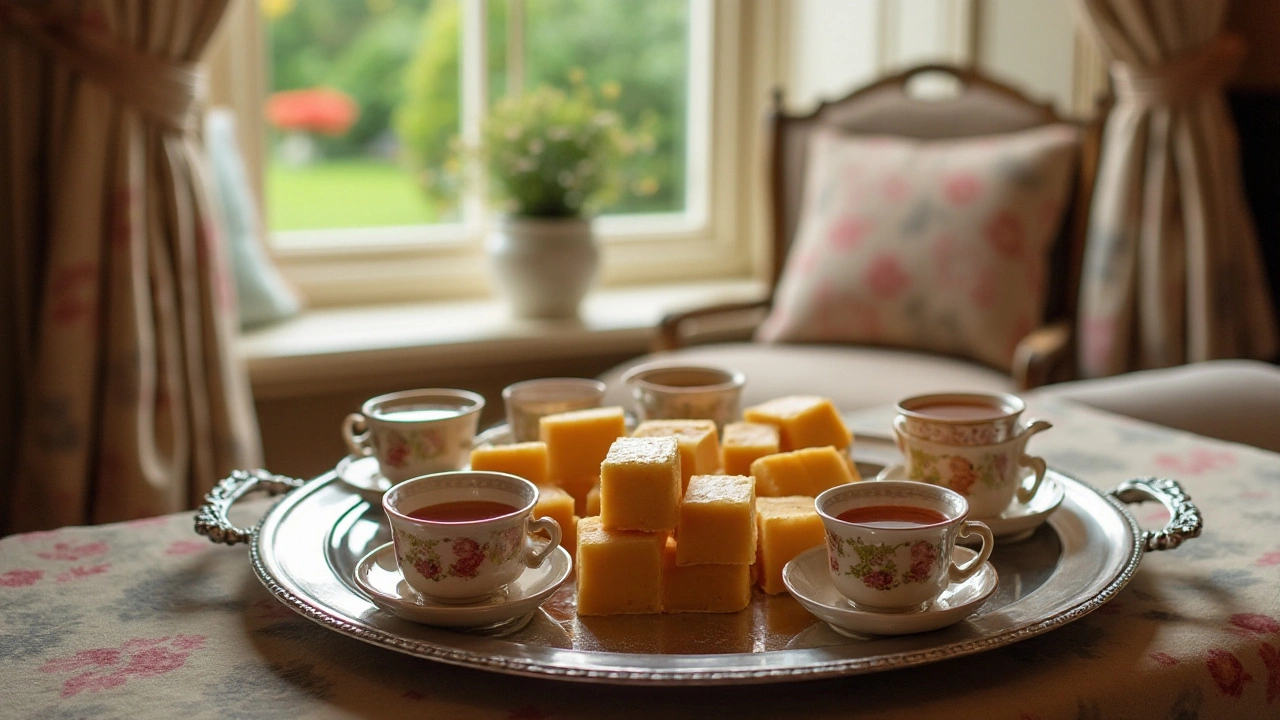
Cooking Technique
Creating traditional fudge is as much an art as it is a science. As straightforward as the ingredient list may be, the technique behind cooking this delectable treat determines its signature texture. It's about patience, precision, and understanding the delicate dance between heat and chemistry. Start with a good heavy-bottomed saucepan to ensure even heat distribution, which is crucial to prevent the sugary mixture from scorching.
First, place the sugar, butter, and milk into the saucepan and set it over medium heat. Stir gently and consistently to help dissolve the sugar. As the mixture heats, the sugar's structure begins to melt into a syrup, blending harmoniously with the butter and milk. Keep an eye on the creation of small bubbles that indicate the beginning of the candy-making process. These bubbles hint at the moisture evaporating, preparing your fudge for its soft, creamy consistency.
The magic number that candy thermometers love is around 234°F (112°C). Known as the 'soft-ball' stage, this temperature ensures that the fudge sets firmly yet remains chewy and dense. Once achieved, remove the pan from the heat and let it cool slightly. Don't rush this step; a short rest period allows for the fudge mixture to stabilize. Stirring too soon could cause the sugar to crystallize improperly, resulting in a coarse texture.
If you crave added richness, this is the perfect time to incorporate the vanilla. Fold it gently into the warm mixture. For those who love to experiment, consider adding chopped nuts or a swirl of chocolate. Once combined, beat the mixture vigorously with a wooden spoon. This exercise promotes crystallization crucial for that melt-in-the-mouth feel. Pour the fudge into a lined square baking pan and leave it to rest until firm.
"The right temperature is key to perfection," says the renowned pastry chef, Martha Stewart. "Cooking until it's just at a soft-ball stage is what gives fudge its satisfying texture."
Though the process might seem intricate at first glance, mastering it can provide an immense sense of accomplishment. Cooking fudge is an insightful journey that transforms basic ingredients into a rich, traditional fudge treat that's ready to delight anyone with a sweet tooth. Every step, from the sweet syrup to the final pat-down in the pan, is an opportunity to hone one's craftsmanship in the fascinating world of confectionery.
Fun Variations and Tips
When it comes to crafting traditional fudge, your imagination is the only limit. While the classic recipe holds a special place in many hearts, experimenting with flavors and textures can lead to delightful discoveries. One simple twist is incorporating different types of chocolate. Swap the standard milk chocolate for dark or white chocolate to offer a distinctive taste to your fudge palette. Another popular addition is nuts—walnuts, pecans, and almonds can provide just the right amount of crunch, balancing the creamy texture with a satisfying bite. Not to forget, adding a sprinkle of sea salt on top not only serves as a lovely garnish but also enhances the richness of flavors, creating an irresistible sweet-savory combination.
Of course, the realm of fudge recipes has ventured far beyond the ordinary. Why not channel your inner gourmet and add fruits or spices to the mix? Dried cranberries, a hint of cinnamon, or even a dash of chili powder are adventurous choices that can give your fudge a seasonal or spicy flair. Moreover, infusing flavors such as peppermint or orange zest can turn your fudge into a festive treat, perfect for gifting during holidays or special occasions. A beloved variation among many is peanut butter fudge, which melts as soon as it touches the tongue, leaving an unforgettable creamy nuttiness. Always ensure that any add-ons are well incorporated, which not only serves to distribute flavor evenly but also helps maintain that desired silky consistency.
Maintaining the right cooking temperature is key when you're exploring classic fudge ingredients. Fluctuating temperatures can lead to crumbly or overly dense fudge. Using a candy thermometer is an excellent way to ensure precision; typically, you should aim for the sugar mixture to reach a 'soft ball' stage, which is around 235 degrees Fahrenheit. Exercise patience as you stir—rushing the cooling process can result in gritty texture if sugar crystals form prematurely. Many fudge enthusiasts suggest cooling the mixture steadily and giving it a good, vigorous beating until it loses its gloss before pouring it into a pan. This technique develops the crystals gradually, resulting in a smoother texture.
Perhaps one of the simplest but most rewarding practices is engaging your loved ones, especially children, in the fudge-making process. Introducing kids to the joys of cooking can inspire creativity and a deeper appreciation for homemade goodies. Tamsin, my kid, adores helping measure ingredients and stirring the fudge—a task she takes as seriously as a master chef would. It's moments like these that enrich the experience and add a personal touch to each delightful batch you create. Remember, the fudge you make is not just a sweet to eat but a memory in the making. As quoted by culinary expert Julia Child,
"People who love to eat are always the best people."Involving family and friends in cooking enriches these bonds and builds cherished memories, sweetened by the taste of your very own homemade fudge.


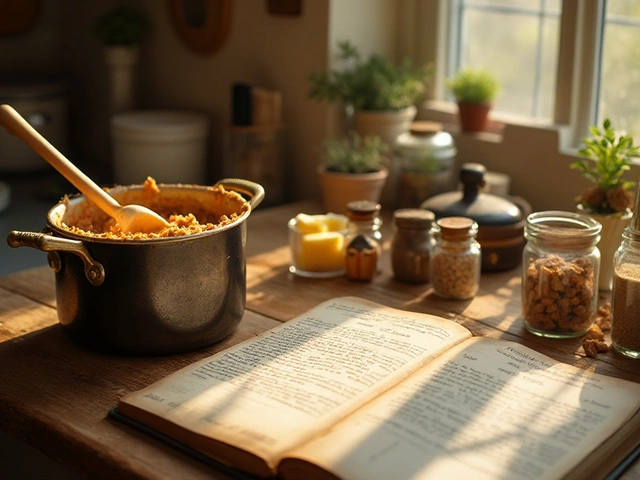
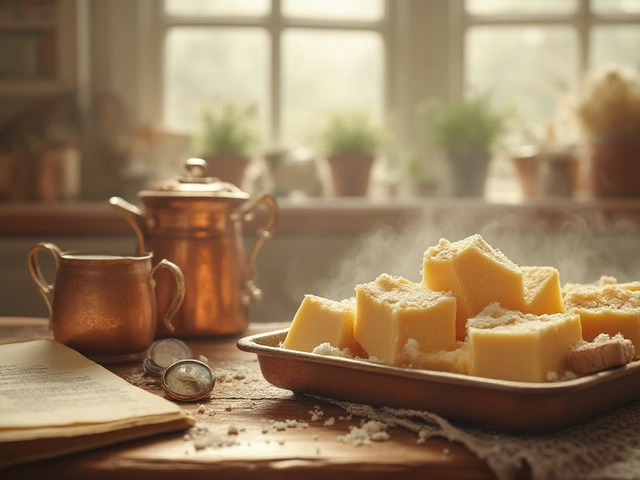
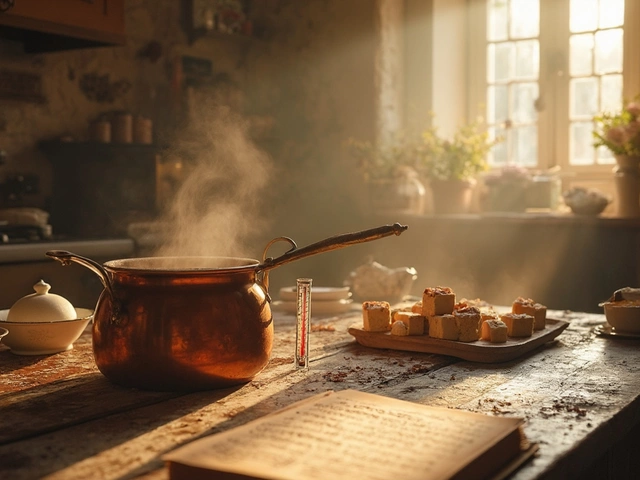

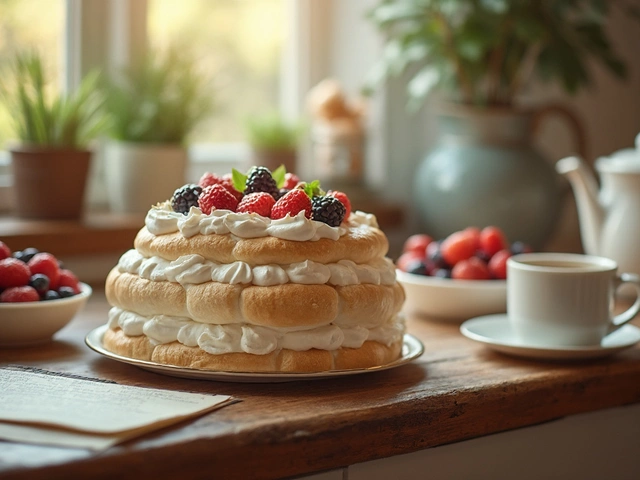


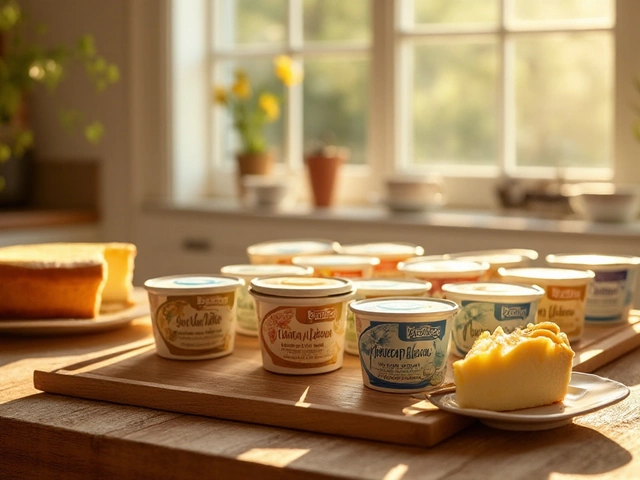
Write a comment